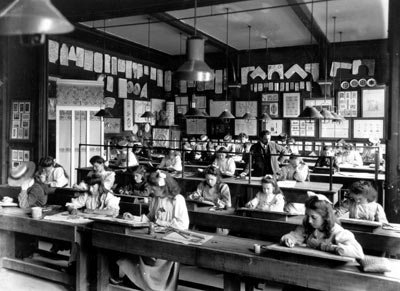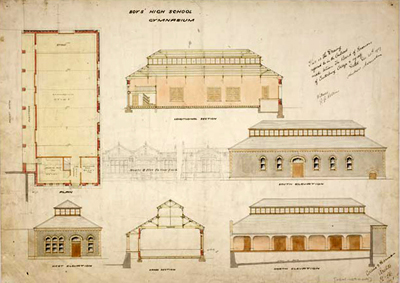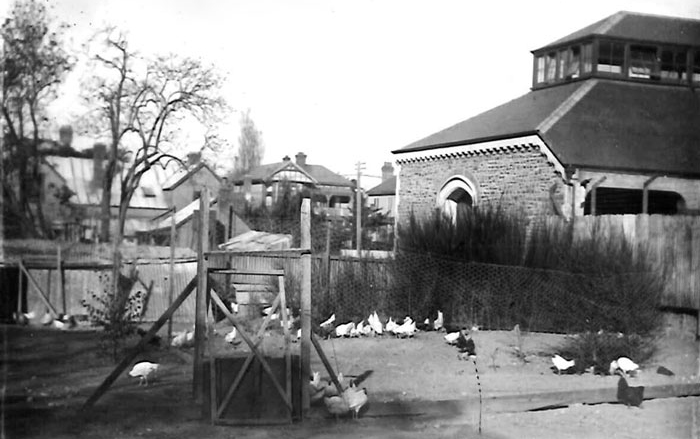Christchurch Girls' opened in 1877 but the buildings were not ready until 1878. As a result the School’s first two terms were taught in College lecture rooms. Girls were required to pay their fees to the College Registrar in order to get a ticket of admission to enter College grounds. Unfortunately the lecture rooms were not good for teaching small children, as they were designed gallery style, which meant teachers couldn’t walk around behind their students to check their work. Once the girls moved into their new building each class had small dual desks with big lockers in them for the girls to store books. They would have needed the storage space, as the syllabus in 1878 included English, writing, elementary drawing, arithmetic, geography, history, physics, astronomy, chemistry, music, class singing, calisthenics, needlework and cooking.

Children and Animals
In the 1850s less than half of the children aged under 15 in Canterbury were able to attend school, either because there were not enough schools or because they were too costly. With the introduction of legislation in 1877 making primary education compulsory, there was a push to create more schools in Christchurch, including Christchurch Boys' and Christchurch Girls' High Schools. Although the connection may seem unusual today, Canterbury College was a logical choice to manage the new high schools, in part because they had access to teaching staff and facilities, and also because this meant the College could ensure more students would matriculate and be eligible for tertiary study. Christchurch Boys' and Girls' High Schools were not fully independent of Canterbury College until 1949.

A design class for girls at the Art School. This image appears in the Canterbury College School of Art Syllabus for 1911.
The Boys' High syllabus was just as demanding, but the Prospectus of 1883 also boasted that the school had a playground, fives court, swimming bath, museum and lending library attached for recreation, with cricket and football in Hagley Park. To keep active boys in line, a system of school monitors was introduced in 1883. Fines could be given out for offences such as swimming without bathing trunks, crossing the lawn (6d), playing on the fives courts in boots (3d) or scribbling on walls and desks (1s). It sounds light hearted, but some matters were taken very seriously. In the 1880s three boys were caught who had climbed the walls and taken a swim in the pool on a late summer’s night – they were expelled until the end of term.

The Armson Collins design for the Boys' High School gymnasium.
Not all classes were taught inside. Part of the curriculum for the Boys' School included gardening and husbandry skills. However in the confined town site this sometimes led to conflict. In 1891 Worcester Street resident J.H. Seager complained to the College Board about the Boys' School using a section of land for a fowl run and duckery, which meant a lot of noise and smell. The Boys' High Magazine of Summer 1909 notes “… generations of tenants have interested scholars by their attempts, always failures, to rear together cabbages, fowls and dogs, on the sandy yard at the back."

his photograph from Charles Chilton's collection shows the fowl run adjacent to the Boys' High School gymnasium.
Free play had to take place on relatively confined spaces, which grew incrementally smaller as the College expanded. The Girls' School had a grassy wilderness behind it called ‘the garden’ which had a mound and a willow tree on it. This was a favourite place for the girls to eat lunch and watch passing traffic on Hereford Street. One student later recalled "If a luggage-piled four wheeler, or a smart doctor’s dog-cart or gig did occasionally pass that way, there was the satisfaction that one was there to see them.” For the Boys' School the nearby Christ’s College offered some opportunities for fun. In the big snow of 1901 students took the chance to have a snowball fight with Christ’s College boys through the Canterbury College quads. The snowball fight became a semi-regular event.